The flowering plant ceropegia (Ceropegia) belongs to the family Lastovne, or Kutrovye. In nature, it can be found in the tropical regions of Africa and Asia. The name of the culture comes from the Greek word for "candelabrum", it is associated with the flowers of the creeper, which have an unusual shape. This genus unites more than 180 species, and some of them are cultivated by flower growers.
Content
Brief description of cultivation
- Bloom... With good care and optimal conditions for growth, Ceropegia blooms almost all year round, but its flowers do not have high decorative effect.
- Illumination... Needs lots of bright sunlight. In the summertime at lunchtime, when the sun is most active, the bush needs a little shading.
- Temperature regime... During the growing season, the air temperature should be between 20 and 25 degrees. With the beginning of autumn, the temperature should be gradually reduced, and in winter it should be at the level of 14 to 16 degrees, but not lower than 11 degrees.
- Watering... In the spring-autumn period, the plant is watered moderately immediately after the top layer of the soil mixture dries. In winter, the number of watering is reduced, and the substrate is moistened only when 3 days have passed since the drying of its top layer.
- Air humidity... Can be anyone.
- Fertilizer... You do not need to feed young bushes. Adult specimens need regular feeding, which is carried out in the spring-summer period every 20 days. To do this, use a solution of mineral fertilizer for orchids or succulents, while taking ½ part of the dose that is recommended by the manufacturer. During the autumn-winter period, fertilizers are not applied to the soil mixture.
- Dormant period... Not pronounced, observed in winter.
- Transfer... While the young bush is transplanted annually in the spring, the adult plant does not need frequent transplants, they are carried out only if necessary.
- Reproduction... Cutting, dividing the rhizome and seed method.
- Diseases... Fungal rot.
- Harmful insects... Mealybugs, spider mites and aphids.
Features of ceropegia
Ceropegia is a herbaceous perennial plant that can be climbing or erect. The rhizome has a tuberous or thickened spindle-shaped form, there is an accumulation of moisture in reserve. Such a plant has creeping and fleshy shoots. Opposite thickened small leaf plates have a linear, ovoid or lanceolate shape. In most species, shoots and leaf plates are succulent. As a rule, the juice of such a plant is transparent, and not milky. Umbellate or racemose inflorescences consist of large five-membered axillary flowers, their corolla is tubular at the base, expanded. In flowers, the stamens have grown into a tube. The fruit is a fusiform, cylindrical or linear leaflet.
Home care for ceropegia
Illumination
All types of ceropegia require bright sunlight. Such succulents will not be damaged by the direct rays of the sun, but if it stands on a south-facing window, then at lunchtime it should be shaded with a thin curtain. With poor lighting, the foliage becomes smaller and it becomes much smaller, while flowering may be absent.
Temperature regime
During intensive growth, it is recommended to keep the bush in a warm place (from 20 to 25 degrees). With the onset of autumn, the temperature should be gradually reduced to 16 degrees, thanks to this the plant will be able to prepare for the upcoming dormant period. In winter, ceropegia is kept in a cool place (from 14 to 16 degrees). The air temperature in the room should not drop below 11 degrees. However, it should be borne in mind that if the plant stays in the cold for a long time (about 11 degrees), then it may die. If the air temperature at night and during the day is very different, then this will not harm the flower.
Watering
From spring to the second half of the autumn period, watering should be moderate, it is carried out immediately after the top layer of the soil mixture dries out. Be sure to pour the liquid that is glass into the pan after watering. With the onset of the autumn period, a gradual reduction in watering is carried out. In winter, watering is carried out only when two or three days have passed after the top layer of the earthen mixture has dried. But make sure that the earthen lump in the pot does not dry out, either in summer or in winter, because this may cause the root system of the flower to die. If tap water is used for irrigation, then it must be filtered or defended, and it must also be at room temperature. The air humidity in the room where ceropegia grows can be anything, and you do not need to moisten the bush from the spray bottle.
Fertilizer
While the bush is young, it is not necessary to feed it, since it has enough nutrients present in the soil mixture. Top dressing of adult bushes is carried out 1 or 2 times a month, for this they use mineral fertilizers for orchids and succulents. Fertilizers are applied to the soil from early spring to the second half of the autumn period, while taking half the dose recommended by the manufacturer. In the autumn-winter period, feeding is not carried out.
Transplant of ceropegia
Only young bushes are systematically transplanted, they do this in spring, while replacing both the container and the soil mixture. Adult specimens are transplanted only when their root system becomes very crowded in the pot. The transplant is carried out by the transshipment method, while the old substrate is shaken off the root system only a little. For transplanting, use a purchased ready-made soil mixture for cacti, into which a small amount of charcoal is poured. If you wish, make an earth mixture with your own hands, for this, combine the sand, humus, sod and leafy soil, which are taken in equal parts, and then charcoal is poured into the mixture.
The pot for planting must be taken low, but wide, a good drainage layer is made at its bottom, and then the flower is transplanted by transshipment.Further, all the voids in the container are filled with fresh soil mixture.
Bloom
As a rule, the culture blooms throughout almost the entire year, while problems with its flowering are extremely rare. But not all species have flowers that are highly decorative, many of them are cultivated only for the sake of beautiful foliage. In the event that the appearance of the inflorescences does not suit you, then simply remove them.
Reproduction methods
Ceropegia can be propagated by dividing the rhizome, cuttings and seeds.
Growing from seeds
Fill a container with a light potting soil mixture and sow the seeds, which are sprinkled with a thin layer of substrate. From above, the container is covered with glass (film) and removed to a warm place (from 20 to 25 degrees). Until the seedlings appear, make sure that the mixture in the container is slightly damp all the time.
As a rule, seedlings appear very quickly. A pick on individual pots is carried out only after they grow up and get stronger. They take care of unpicked plants in the same way as adult specimens.
Cuttings
Cuttings are harvested at the beginning of the spring, before the bush begins to grow intensively. To do this, cut off several stems and wither a little, and then planted for rooting in pots reaching 70 mm in diameter, 2 or 3 pieces each. They are watered moderately and kept in a cool (18 to 20 degrees) and well-lit place, be sure to protect the cuttings from direct sunlight.
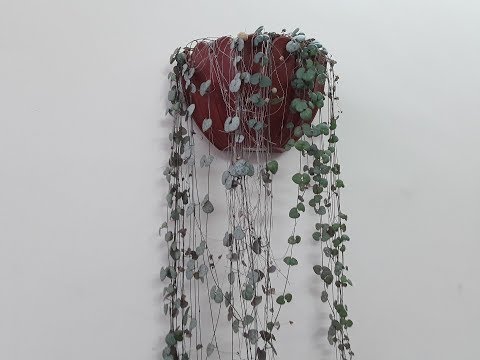

Watch this video on YouTube
Propagation by air tubers
Some species can be propagated with air tubers, for example, Wood's ceropegia. To do this, the stem is divided into several parts, while nodules and at least 2 leaf plates must be present on each segment. Planting cuttings for rooting is carried out in the sand. And after they give roots, they are transplanted into pots. If you want to get a dense bush, then plant several cuttings in one container at once.
Rhizome division
As a rule, the reproduction of a flower by dividing the rhizome is carried out simultaneously with the transplant. To do this, the bush pulled out of the container is divided into several parts, the size of which should be approximately equal. Further, the delenki are planted in individual pots, at the bottom of which there is a drainage layer.
Pests and diseases of ceropegia
Diseases
Ceropegia is susceptible to fungal infections. Most often, she is sick with various rot, the development of which occurs due to poor care. Experts advise not to water the flower too abundantly, and also make sure that no stagnation of liquid is observed in its root system. When a bush is damaged by rot, it is removed from the container and its root system is examined. Cut out any decayed areas and immerse the root system in the fungicide solution for 30 minutes. When the roots dry out, the bush is planted in an old pot, while the soil mixture is used fresh.
If the lighting is excessively intense, sunburn can form on the leaf plates of the plant. With poor lighting, the shoots are painfully stretched out.
Harmful insects
When grown indoors, aphids, mealybugs and spider mites can settle on the bush. Such harmful insects are suckers; they bite through juicy foliage and shoots and suck the plant sap out of them. The plant on which the pests have settled weakens, becomes lethargic, and deformation of flowers and stems is also observed. In addition, these pests are the main vectors of viral diseases, which are currently considered incurable.
In the event that there are few insects on the ceropegia, then getting rid of them will be quite simple, for this rinse the bush under a warm shower.If there are a lot of pests, then transfer the bush to fresh air and spray it with Fitoverm or Aktellik solution.
Types of ceropegia with photos and names
At home, flower growers most often cultivate only 4 types of ceropegia.
African Ceropegia (Ceropegia africana)
A herbaceous perennial plant with creeping fleshy stems. Smooth small thickened leaf plates have a linear or ovoid shape. Small flowers of green or dark purple color consist of petals, converging tops, and also from a corolla tube, the length of which is about 20 mm.
Ceropegia barklyi
This herbaceous perennial plant has a low-branched tuberous rounded rhizome. The fleshy stems are usually bare, but sometimes pubescent. Short-petiolate ovate-lanceolate leaf plates are greenish, and their veins are white. Their lengths vary from 25 to 50 mm. Umbellate inflorescences consist of flowers reaching about 50 mm in length, their outer surface is green, and the inner one is purple. Their petals are fibrous, triangular at the base, and sharpened towards the apex.
Ceropegia Wood (Ceropegia woodii)
It has a gray tuberous rhizome and purple creeping stems. Fleshy foliage can be lanceolate, ovoid or triangular, up to 15 mm wide and about 20 mm long. There is a marble pattern on the dark green front surface of the plate, and its seamy surface is greenish or purple. During intensive growth, yellowish airy nodules form in the nodes of the stems. At high air humidity, roots grow on the tubers, so they are used for flower propagation. In the leaf axils, small flowers are formed with a corolla of a light flesh color and with dark brown petals, on the inner surface of which there is a pubescence, consisting of a pile of light color. If you provide the bush with good care and suitable growth conditions, then it will delight you with its flowers throughout most of the year. At the same time, you need to care for this species in the same way as for other ceropegias.
Ceropegia sandersonii
Such a perennial plant has thin and creeping stems. Fleshy leaf plates reach about 40 mm in width, and up to 50 mm in length, they have a heart-ovoid shape, which is short or bluntly pointed towards the apex. On their seamy surface, the central vein is convexly highlighted. The short inflorescence is of few flowers. The length of the green corolla is about 70 mm, in the area of the pharynx it has a paler color. At the base, the corolla tube is slightly swollen, and from above it has a funnel-shaped shape. 5 expanding styloid petals form a canopy that resembles a parachute. On the edge of the petals there are whitish hairs.
Stapeliiformis ceropegia (Ceropegia stapeliiformis)
Such a creeping bush has thick stems (up to 20 mm thick), which are rounded in the lower part, and become three-ribbed at the top. Each reduced node has 3 whorled leaves with two stipules. The leaf plates in the upper part are very thin and they can twist around the support. During flowering, few-flowered inflorescences are formed. The length of the corolla in flowers is about 50–70 mm; the corolla tube swollen at the base is funnel-shaped in the upper part. Each flower has 5 arcuate petals, the outer surface of which is white with specks of dark brown color.
In addition to the species described above, variegated ceropegia is cultivated by flower growers - this hybrid is very similar to the derived species, but there are still a lot of differences between them. To date, breeders do not abandon their attempts to develop a new hybrid or a form of ceropegia.
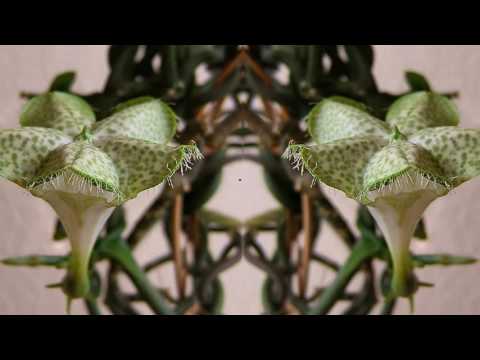

Watch this video on YouTube

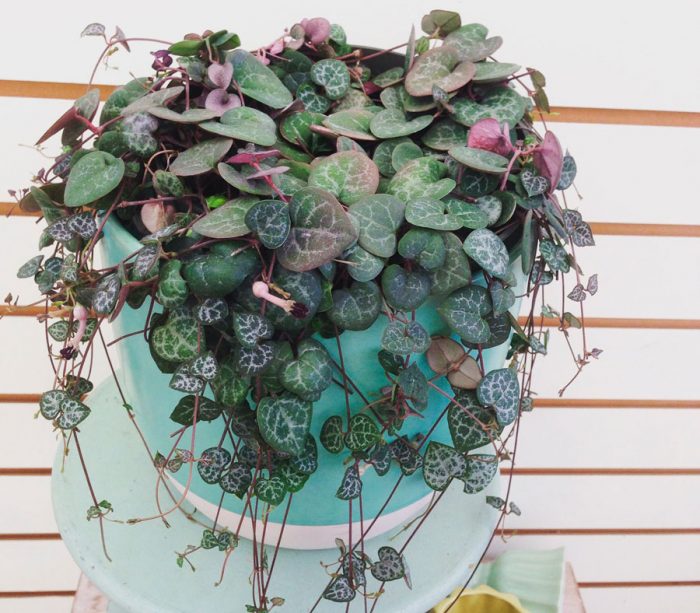

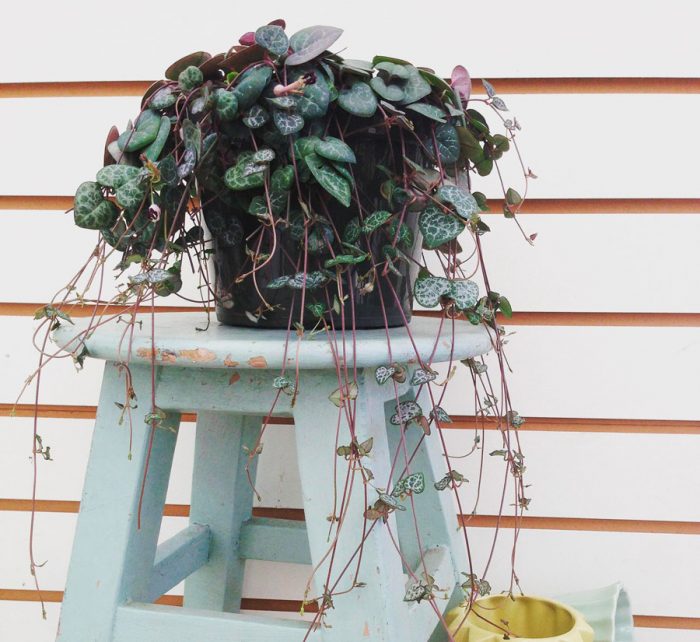
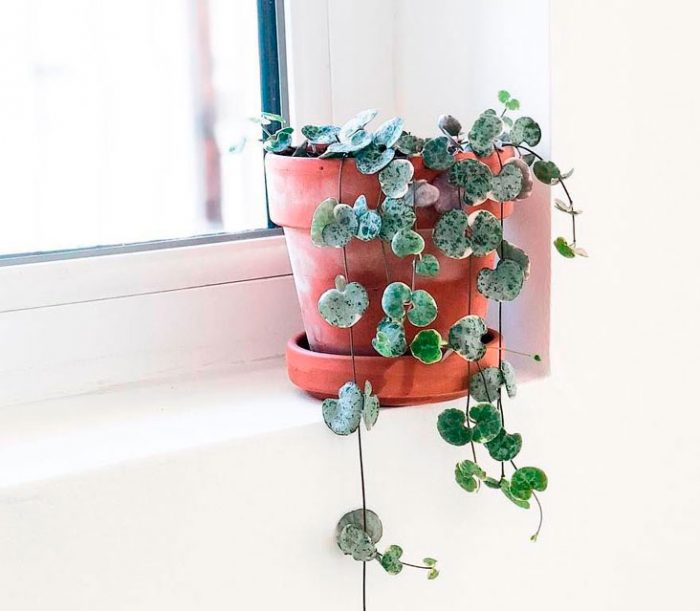
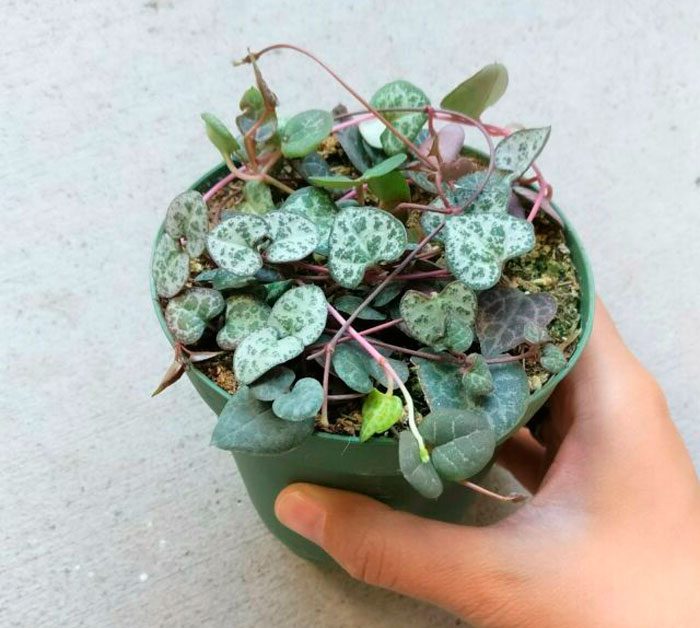
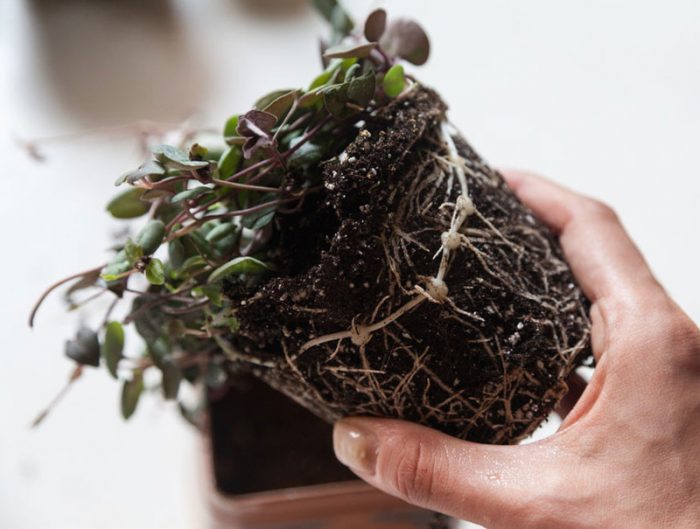
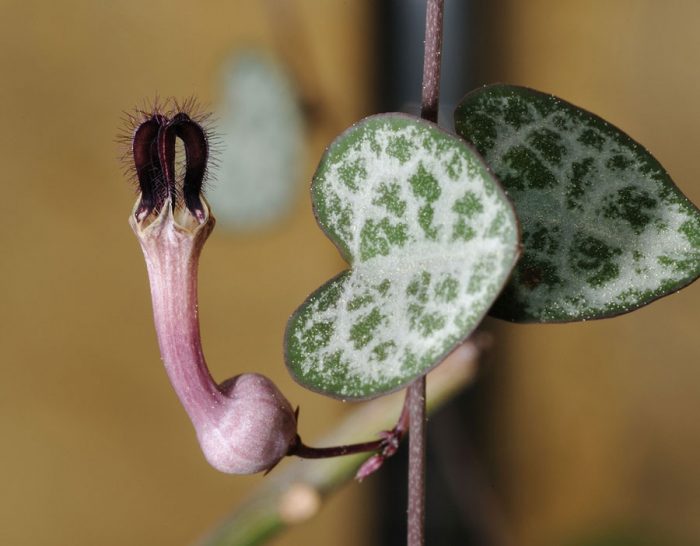
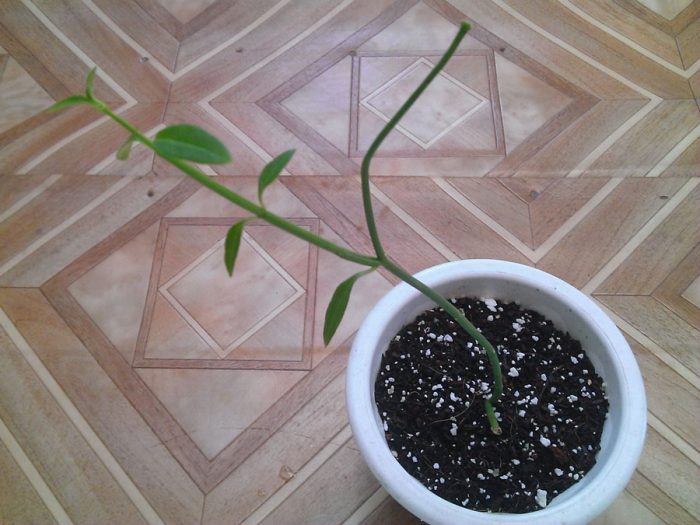
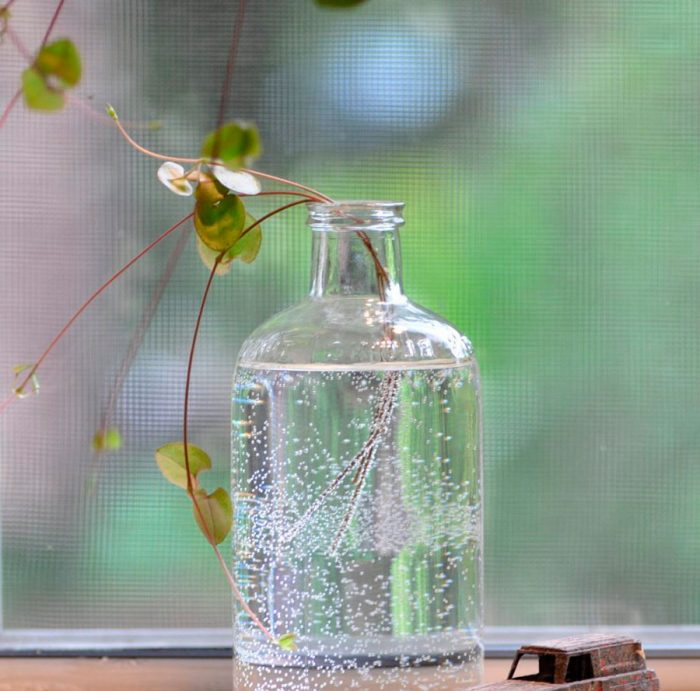
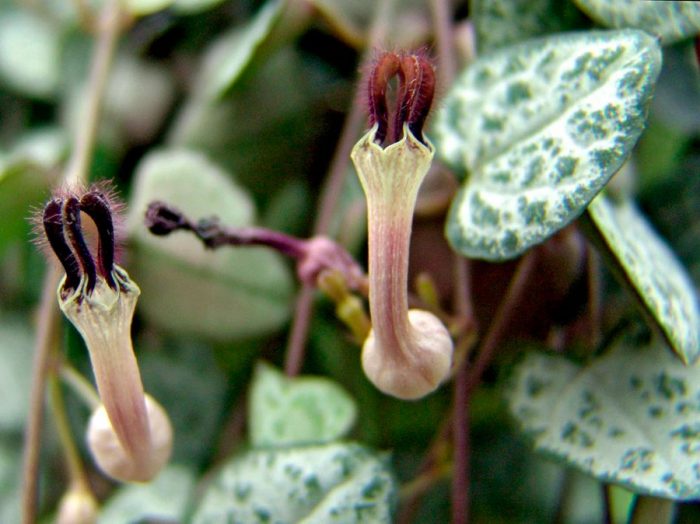
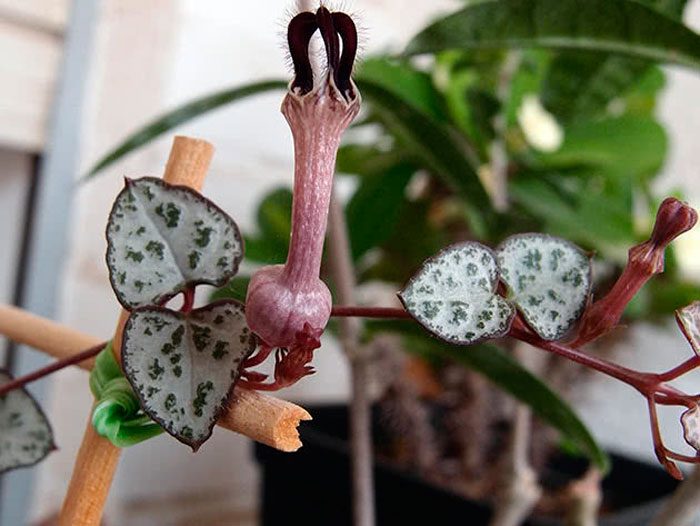
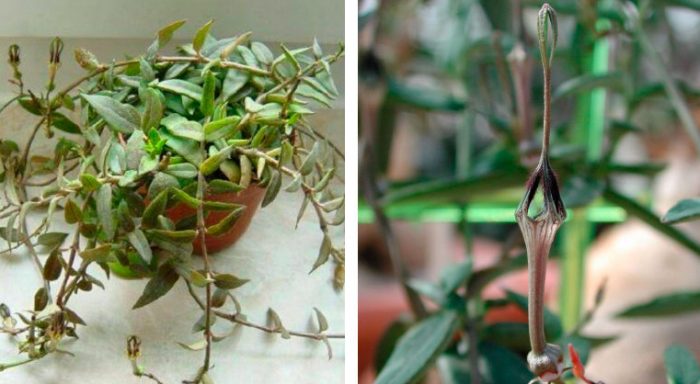
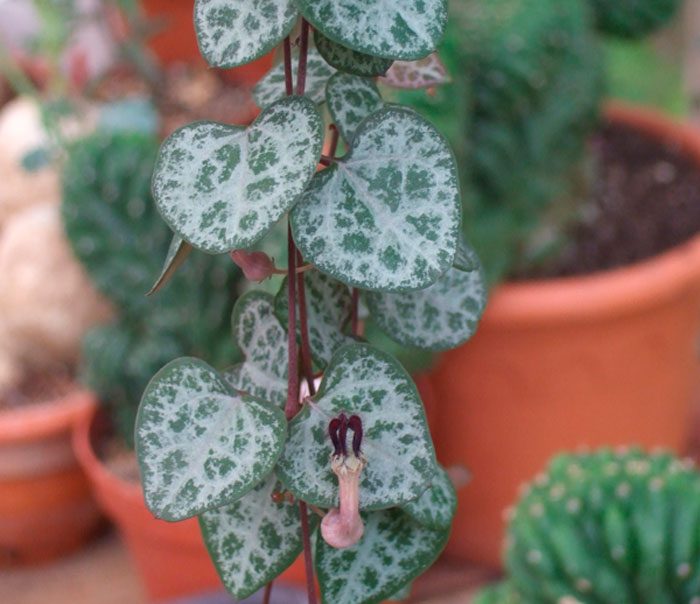
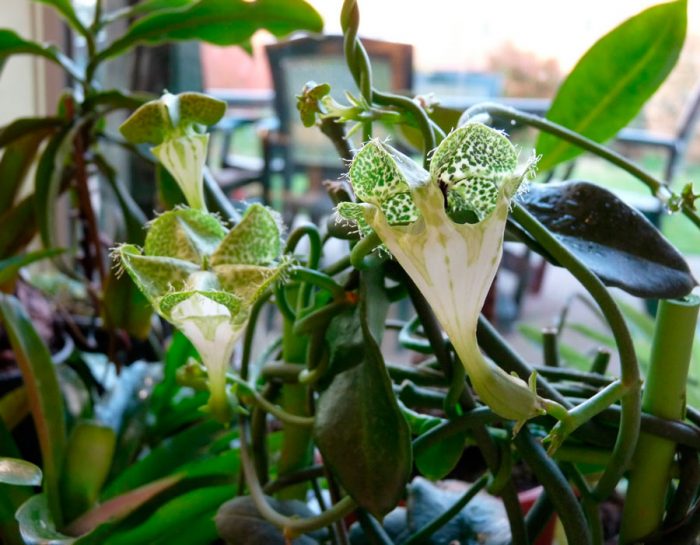
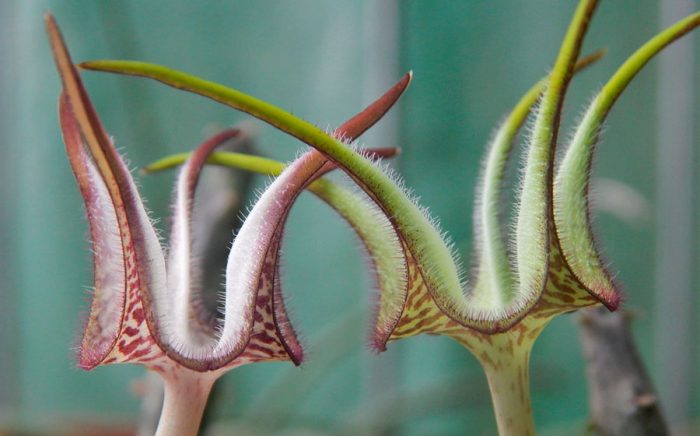
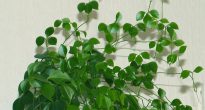
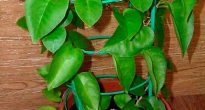
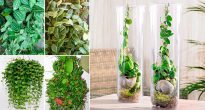


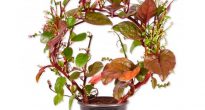
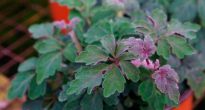
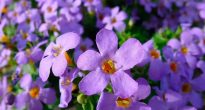
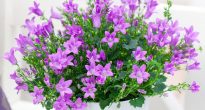

Why we do not want to grow this flower, it is not in stores, and why the photo does not show it in the flowering stage
I have Wood's ceropegia but does not bloom. It seems that I do everything as recommended here. Maybe still too young?